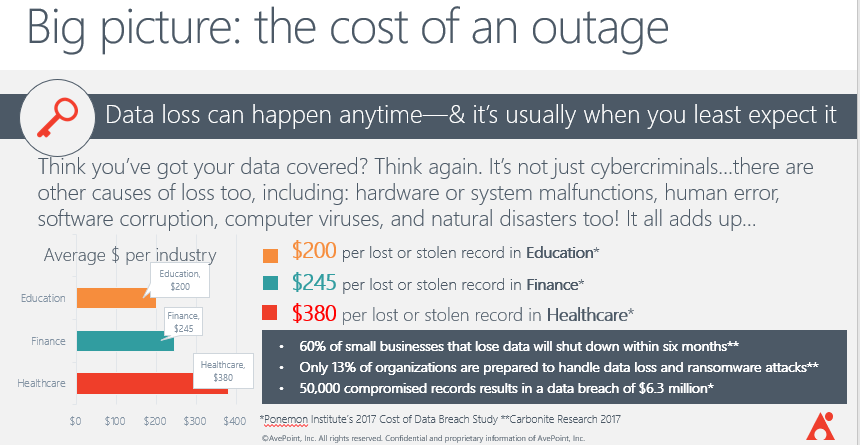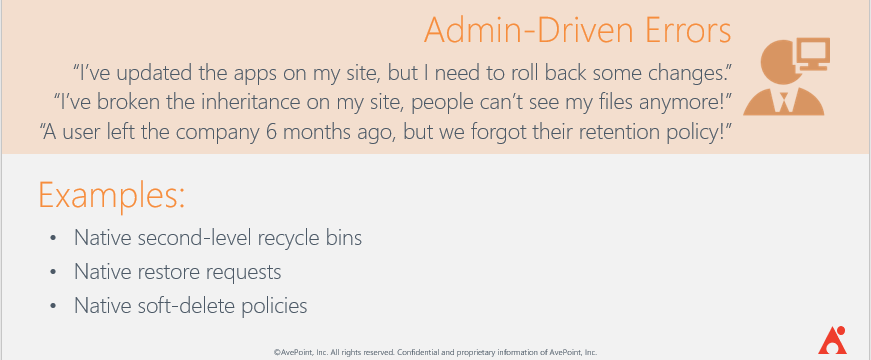Native Office 365 Backup Coverage Myths: Debunked!

Learn how to effectively protect your data with our upcoming webinar “Cloud Backup and Restore for Your Organisation: Beyond Native Capabilities!“
Editor’s Note: This blog post was adapted from a recent webinar from John Hodges and Stephanie Donahue. Watch on-demand here.
It’s no mystery why the native capabilities of Office 365 are often undersold by third-party backup vendors. This tactic often leads to organizations second-guessing the level of data protection they need.
The reality is that native safeguards can be the right choice for certain use cases–when managed correctly. Let’s debunk some of the more popular myths to show you how to maximize your coverage using native capabilities!
Want to know how much native O365 backup really covers? Check out this post: Click To TweetWho’s Responsible for Protecting What?
There are typically two primary reasons why an organization is dealing with a data loss event: they’re commonly either user-driven or admin-driven errors. We previously wrote a post highlighting who is responsible for what when it comes to an organization’s backup policy. It’s important to highlight the risk of those data-loss events and prepare to mitigate the costs associated with an outage.

What Does Your Organization’s Policy Cover?
When it comes to what a typical organization’s policy covers, we tend to see basic coverage that usually isn’t enough for all of that organization’s needs. The common policy covers basic user rollbacks for document versions, temporary admin soft-delete protection, and “worst case” rollbacks that Microsoft can help support.
We don’t want to start fearmongering to get organizations to use our product, but there are real-case errors that can happen that organizations need to consider. These can include:


What Organizations Should Be Worried About
Organizations can get confused about what they’re responsible for and what Microsoft is responsible for within their Office 365 environment. The chart below provides a handy breakdown of who is responsible for what:

The most common events we suggest organizations look out for are missing SLAs for end-user recovery, potential high-impact scenarios with native restore, and long-term recovery requests for user data.
When Organizations Should Reach Out for Help
The long and short answer to this is: Before you have a problem! There have been scenarios where customers have come to us to ask for help with a data loss event and we couldn’t do anything due to the limitations of the native backup capabilities. You don’t want to be stuck in this situation!
To learn more about the differences between native vs. third-party vendor backup capabilities, make sure you watch the full on-demand webinar.
Looking for more on Office 365 backup? Be sure to subscribe to our blog!

John Hodges is Senior Vice President of Product Strategy at AvePoint, focusing on developing compliance solutions that address modern data privacy, classification, and data protection needs for organizations worldwide. Since joining AvePoint in 2008, John has worked directly with the company’s product management and research & development teams to cultivate creative ideas and bridge the gap between sales and technology – providing a practical target for innovation and a focused message for sales and marketing. John has been actively engaged in the SharePoint community for several years, working with many Fortune 500 companies to drive sustainable adoption of Microsoft technology and optimize SharePoint’s larger purpose-built implementations. John’s insights and opinions on modern Information Technology can be found in various industry publications, as well as throughout this numerous speaking sessions in webinars and at events worldwide.

Stephanie Donahue is a Microsoft MVP, and president and managing partner of the PAITgroup, where she helps senior management build technology plans to achieve business critical goals. With almost 20 years of experience in IT, Stephanie believes that technology can minimize risk and maximize business growth.


